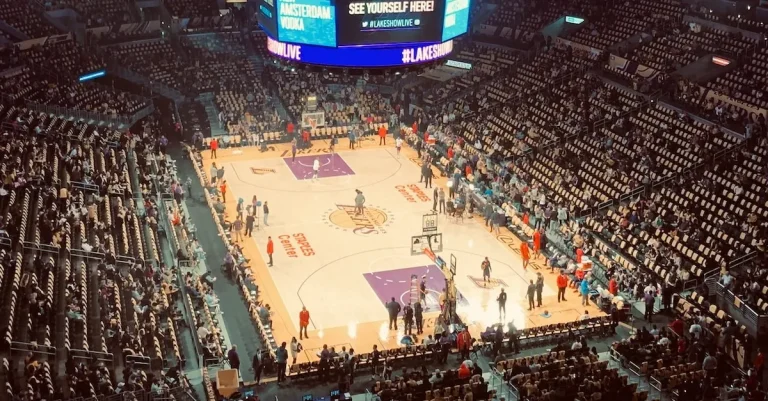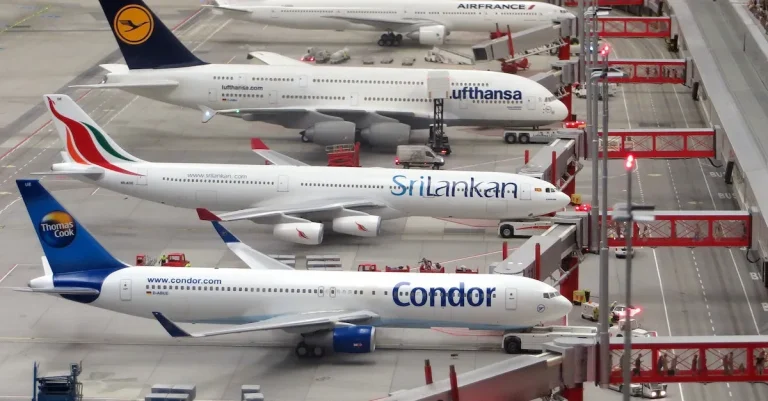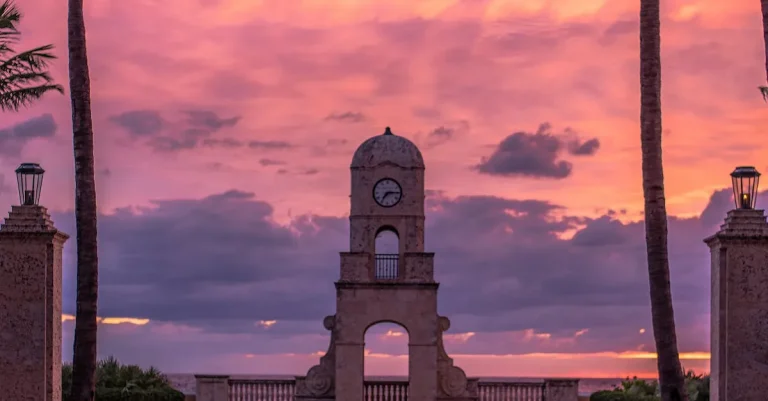Manhattan Vs New York City: What’S The Difference?
New York City is one of the most iconic and exciting cities in the world, with Manhattan being its most famous borough. If you’re wondering about the distinctions between Manhattan and greater New York City, you’ve come to the right place.
If you’re short on time, here’s a quick answer to your question: Manhattan is one of the 5 boroughs that make up New York City. It’s the most densely populated and commercial borough, home to many of NYC’s top attractions like Central Park and Times Square.
In this comprehensive guide, we’ll explore what exactly Manhattan is, how it relates to the rest of New York City, and all the key differences between the two in terms of geography, attractions, culture, cost of living and more.
Defining Manhattan and New York City
When discussing Manhattan and New York City, it is important to understand the distinction between the two. While Manhattan is a borough within New York City, New York City itself encompasses more than just Manhattan. Let’s take a closer look at what defines each of these entities.
What is Manhattan?
Manhattan is one of the five boroughs that make up New York City. It is located at the heart of the city and is often considered its cultural, financial, and commercial center. With its iconic skyline, bustling streets, and world-renowned landmarks such as Times Square, Central Park, and the Empire State Building, Manhattan attracts millions of visitors each year.
Manhattan is known for its diverse neighborhoods, including the vibrant and artistic Greenwich Village, the bustling Midtown Manhattan, and the upscale Upper East Side. It is also home to Wall Street, the financial hub of the United States, making it a global center for business and commerce.
Did you know? Manhattan is the most densely populated borough in New York City, with a population of over 1.6 million people.
What is New York City?
New York City, often referred to as NYC, is a sprawling metropolis comprised of five boroughs: Manhattan, Brooklyn, Queens, The Bronx, and Staten Island. It is the most populous city in the United States, with a population of over 8 million people.
As a global economic powerhouse, New York City is home to numerous industries, including finance, fashion, media, and technology. It is a melting pot of cultures and offers a diverse range of attractions, from world-class museums like the Metropolitan Museum of Art to Broadway shows and renowned restaurants.
New York City is also known for its iconic landmarks, such as the Statue of Liberty, Ellis Island, and the Brooklyn Bridge. Each borough within the city has its own distinct character and charm, contributing to the overall vibrancy and diversity of the city.
Fun fact: Did you know that New York City has the highest foreign-born population of any city in the world?
Geographic Differences
Size and shape
When comparing Manhattan and New York City, one of the key differences lies in their size and shape. Manhattan, often referred to as the heart of New York City, is actually one of the five boroughs that make up the larger New York City.
It is a long, narrow island that stretches about 13.4 miles in length and 2.3 miles in width at its widest point. On the other hand, New York City is much larger, encompassing five boroughs: Manhattan, Brooklyn, Queens, The Bronx, and Staten Island.
With an area of approximately 302.6 square miles, it is important to note that Manhattan is just a fraction of the entire city’s land area.
Access and transportation
Accessibility and transportation are also notable differences between Manhattan and New York City as a whole. Manhattan is known for its efficient and extensive transportation system, with a dense network of subway lines and buses that make it easy to navigate the borough.
Additionally, Manhattan is home to major transportation hubs such as Grand Central Terminal and Penn Station, providing easy access to other parts of the city and beyond.
When it comes to New York City, transportation options are diverse and varied across the five boroughs. While Manhattan may have a more centralized and robust transportation system, the other boroughs also have their own subway lines, buses, and commuter trains that connect residents to different parts of the city.
It is worth mentioning that some areas of the outer boroughs may have less frequent or limited transportation options compared to Manhattan.
If you’re interested in learning more about the transportation options in New York City, you can visit the Metropolitan Transportation Authority (MTA) website for detailed information on routes, schedules, and fares.
Cultural Differences
When it comes to cultural differences, Manhattan and New York City as a whole offer unique experiences that cater to different tastes and preferences. The diverse neighborhoods and vibes contribute to the overall distinctiveness of each place.
Neighborhoods and vibes
Manhattan is known for its fast-paced lifestyle and bustling streets. It is the heart of the city, where iconic landmarks like Times Square and Central Park can be found. The neighborhoods in Manhattan, such as the Upper East Side, Greenwich Village, and Harlem, each have their own charm and character.
Visitors can explore the vibrant art scene in Chelsea or indulge in luxury shopping on Fifth Avenue. The energy and glamour of Manhattan make it a popular destination for tourists and locals alike.
New York City, on the other hand, is a diverse melting pot of cultures and communities. The city is made up of five boroughs, including Manhattan, which offer a wide range of experiences. Each borough has its own unique vibe and atmosphere.
Brooklyn, for example, is known for its hipster culture, with trendy coffee shops, vintage stores, and a thriving music scene. Queens is famous for being one of the most ethnically diverse places in the world, with vibrant neighborhoods like Astoria and Flushing offering a taste of different cultures through their cuisine and festivals.
The Bronx is home to Yankee Stadium and the birthplace of hip-hop, while Staten Island boasts beautiful parks and a more suburban feel. Exploring the different boroughs of New York City allows visitors to immerse themselves in the rich cultural tapestry that the city has to offer.
Attractions and landmarks
Manhattan is synonymous with iconic landmarks and world-famous attractions. From the Statue of Liberty to the Empire State Building, there is no shortage of must-see sights. The Broadway theater district is also located in Manhattan, offering visitors the chance to catch a show and experience the magic of live performances.
The museums in Manhattan, such as the Metropolitan Museum of Art and the Museum of Modern Art, showcase impressive collections of art and history. The High Line, an elevated park built on a historic freight rail line, offers a unique perspective of the city and a peaceful escape from the bustling streets below.
While Manhattan may have the most well-known attractions, New York City as a whole offers a plethora of hidden gems and off-the-beaten-path landmarks. The Coney Island boardwalk in Brooklyn, for example, is a historic amusement park that has been entertaining visitors for over a century.
The Flushing Meadows-Corona Park in Queens is home to the iconic Unisphere, a symbol of the 1964 World’s Fair. The Bronx Zoo, one of the largest metropolitan zoos in the world, provides a fun and educational experience for animal lovers.
Staten Island offers stunning views of the Statue of Liberty and the Manhattan skyline from the Staten Island Ferry. Exploring the lesser-known attractions in New York City allows visitors to discover the city’s rich history and cultural diversity.
Demographic Differences
Population Density
When it comes to population density, Manhattan and New York City as a whole have some distinct differences. Manhattan, often referred to as the heart of New York City, is known for its iconic skyline and bustling streets.
With a population of over 1.6 million people packed into just 22.82 square miles, Manhattan is one of the most densely populated areas in the United States. The streets are always bustling with people, whether they are locals rushing to work or tourists exploring the city that never sleeps.
New York City, on the other hand, encompasses five boroughs – Manhattan, Brooklyn, Queens, The Bronx, and Staten Island. As a whole, the city has a population of over 8.4 million people spread across 302.6 square miles.
While the population density of New York City is significantly lower than that of Manhattan, it is still considered one of the most densely populated cities in the world.
Fun Fact: Did you know that the population density of Manhattan is around 71,341 people per square mile? That’s more than 27 times the population density of the entire United States!
Diversity
Both Manhattan and New York City are celebrated for their cultural diversity and melting pot of different ethnicities. However, there are some differences in terms of the level of diversity in each area.
Manhattan, being the most densely populated borough, is a true microcosm of the world. It is home to people from all walks of life, representing a wide range of ethnicities, religions, and cultures. You can find pockets of different communities throughout the island, from Chinatown to Little Italy, each with its own unique cultural charm.
New York City as a whole is known for its incredible diversity. It is estimated that over 200 languages are spoken in the city, making it one of the most linguistically diverse places in the world. However, due to its larger size and the presence of other boroughs, the diversity in Manhattan is slightly more concentrated and visible.
Interesting Fact: According to a study conducted by the City University of New York, Queens is the most ethnically diverse urban area in the world, with over 138 languages spoken by its residents.
Economic Differences
Industries and Jobs
When it comes to industries and jobs, Manhattan and New York City as a whole offer a diverse range of opportunities. Manhattan, being the financial hub of the city, is home to many prestigious banks, investment firms, and financial institutions.
It attracts professionals from around the world who are looking to make their mark in the finance industry. On the other hand, New York City has a more varied economic landscape, with industries such as technology, fashion, media, and healthcare playing a significant role in its economy.
In Manhattan, Wall Street is the epicenter of the financial industry, where traders, bankers, and financial analysts work tirelessly to keep the global markets moving. The presence of these high-paying jobs contributes to the city’s overall prosperity.
In contrast, New York City’s economy is not solely dependent on one industry, making it more resilient to economic downturns.
According to a report by the New York State Department of Labor, the finance and insurance sector in Manhattan employed over 400,000 people in 2020. This represents a significant portion of the city’s workforce and highlights the importance of the industry in the local economy.
Additionally, the technology sector has been growing rapidly in New York City, with companies like Google, Facebook, and Amazon establishing a strong presence in the city.
Cost of Living
One of the most significant differences between Manhattan and the rest of New York City is the cost of living. Manhattan is known for its sky-high real estate prices, with some of the most expensive apartments and properties in the world.
The demand for housing in Manhattan far exceeds the supply, which drives up prices significantly.
The cost of living in Manhattan is also influenced by the high-end lifestyle it offers. From luxury boutiques to Michelin-starred restaurants, the options for entertainment and leisure activities are endless.
However, this luxury comes at a price, and residents of Manhattan often have to pay a premium for the convenience and exclusivity that the neighborhood offers.
On the other hand, the cost of living in other parts of New York City can vary greatly. Neighborhoods like Queens, Brooklyn, and the Bronx offer more affordable housing options, making them attractive to young professionals and families.
The cost of living in these areas is generally lower, with access to a wide range of amenities and cultural attractions.
According to the Council for Community and Economic Research, the cost of living index in Manhattan is significantly higher compared to the national average. This includes expenses such as housing, groceries, transportation, and healthcare.
However, it’s important to note that the cost of living can vary within Manhattan itself, with certain neighborhoods being more affordable than others.
Conclusion
In summary, while Manhattan is just one borough of New York City, it has become nearly synonymous with the city itself due to its fame and influence. However, the outer boroughs each have their own unique identities and offerings.
Understanding the differences between Manhattan and greater NYC can help you better plan your visit and determine which neighborhoods and experiences best align with your interests. Wherever you go, New York promises world-class culture, energy and one-of-a-kind urban adventures.








